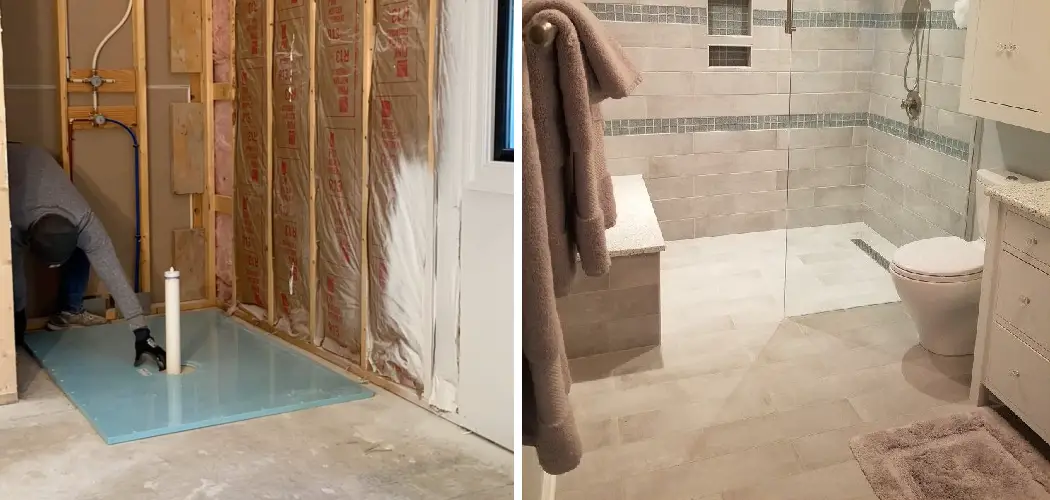Do you want to add a modern and luxurious touch to your bathroom without having to rip out tiles and reframe walls? A curbless shower is the perfect way to bring style, safety, increased accessibility, and effortless cleaning into your home.
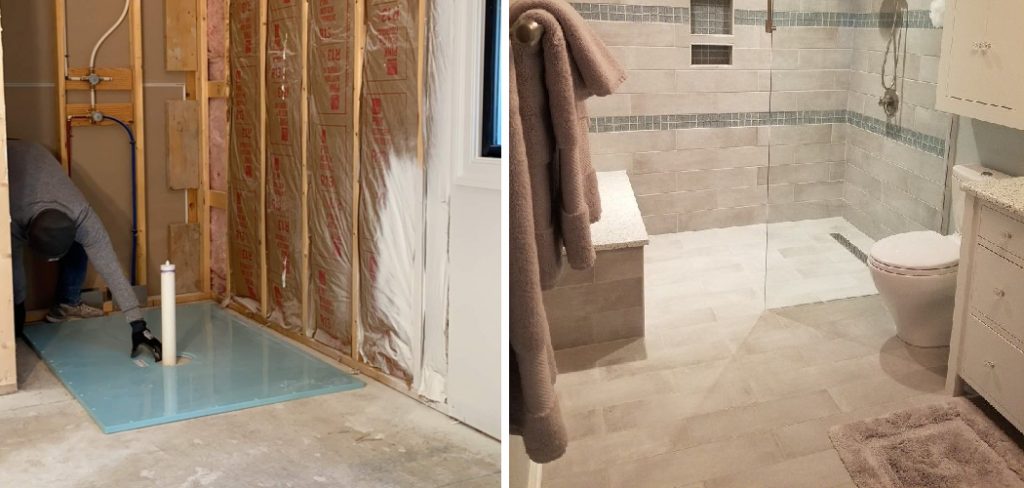
But what if you have wood flooring in the area where the shower will be built? Installing a curbless shower on a wood floor can seem daunting – but it doesn’t need to be!
With our handy tips and tricks, building a beautiful curbless shower in any room with a wooden subfloor is easier than ever before. Read ahead this article on on how to build a curbless shower on wood floor for all the info you’ll need from start to finish – it’s time for an upgrade that both beautifies your home and allows easy maintenance too!
Needed Materials
Given below are the materials that you will need to complete this job:
- Waterproofing Membrane
- Thinset Mortar
- Floor Leveling Compound
- Grout
- 12 Mm Cement Board
- Sandpaper
- Tile Spacers
- Tiles of Your Choice
11 Step-by-step Instructions on How to Build a Curbless Shower on Wood Floor
Step 1: Prep the Floor
The first step is to make sure the wood flooring is level and secure. Use the sandpaper to smooth out any high or low areas, then ensure no nails are sticking up from the subfloor by hammering them down if necessary.
It’s also a good idea to treat the floor with a waterproof sealant before moving on. But remember, you don’t want any sealants that will change the height of the floor – just a protective coating. This is a key step to keep your curbless shower looking great for years to come.
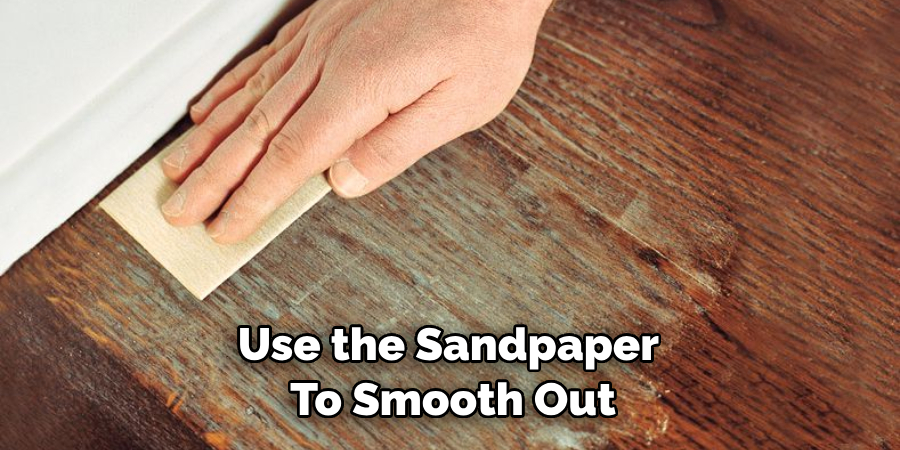
Step 2: Install a Waterproof Membrane
Next, install a waterproof membrane on the wood flooring using thin-set mortar as recommended by the manufacturer of the membrane. Make sure that all seams are completely sealed to prevent moisture from seeping through into the wood floor below. It’s important that the membrane is applied properly in this step to avoid water damage down the line.
Step 3: Level the Floor
Once you have your waterproof membrane installed, use a floor leveling compound to fill any low spots and create an even surface for tiling. Allow the floor to dry completely before moving on; this can take up to 24 hours.
This step is critical for making sure your finished curbless shower looks professional and won’t have any dips or bumps that could cause tripping hazards. This is also a great time to double-check that your floor is absolutely level before tiling over it.
Step 3: Spread Leveling Compound
Once the waterproof membrane has been installed and cured, spread a layer of floor leveling compound over it in order to even out any irregularities on the surface. This will provide a flat surface for the tile installation. You can also use a self-leveling compound if you prefer – just make sure to follow the manufacturer’s instructions on how to apply and cure it. But don’t forget to double-check and make sure the surface is level when you’re done.
Step 4: Install Cement Board
Using a 12 mm cement board, carefully attach it to the floor using a thin-set mortar and make sure that all seams are tightly sealed. This will provide an additional layer of waterproofing and a solid base for tiling. You might need to use a jigsaw to cut the cement board into pieces in order to fit it around any fixtures, piping or other obstacles.
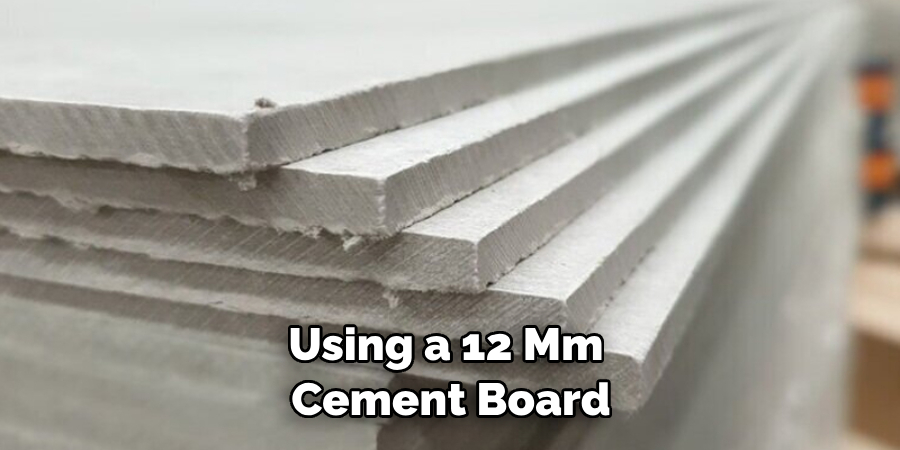
Step 5: Start Tiling
Now it’s time to start tiling! Begin by starting in one corner and laying the tiles. Be sure to use tile spacers between each tile for a consistent grout line. Continue until you have tiled the entire shower floor area, making sure that all grout lines are straight and even. It’s important to take your time and be precise in this step to ensure a professional-looking finish.
Step 6: Cut Tiles as Needed
If needed, use a tile cutter or wet saw to cut any tiles that need to be adjusted in order to fit the shower perfectly. But be sure to take extra care when cutting the tiles, as it’s easy to chip them or mess up the grout lines. This step can take time, so be patient and make sure that all pieces fit snugly before moving on.
Step 7: Allow for Curing
Once all of the tiles are laid, let them cure according to the manufacturer’s instructions. This can take anywhere from 24 to 48 hours, depending on the type of tile you are using. Always make sure to check the manufacturer’s instructions for specific curing times. However, it’s important to not walk on the tiles until they are completely cured and you have given them enough time to set.
Step 8: Apply Grout
Once the tiles have cured, it’s time to grout! Using a rubber float or sponge, apply a layer of grout to fill in all of the grout lines and wipe away any excess with a damp cloth. Allow the grout to cure according to the manufacturer’s instructions. It might be a good idea to use a grout sealer to protect against staining and mold growth, which is especially important in areas that have high humidity like showers.
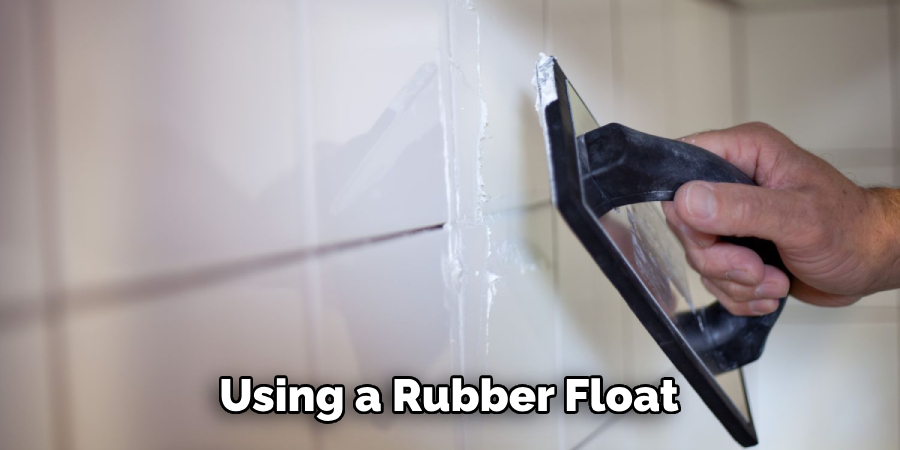
Step 9: Seal the Grout
Once the grout has cured, apply a sealant over it in order to protect it from mildew and dirt buildup. Allow this to cure as well before using the shower. You may also want to use a mild cleaner on the tiles occasionally in order to keep them looking their best.
Step 10: Install Drain and Fixtures
The next step is to install the drain and fixtures. Make sure that all of the pipes are properly connected before turning on the water supply. It’s also a good idea to install a water shut-off valve nearby so that you can quickly and easily turn off the water in case of an emergency. But remember, always turn the water off at the main shut-off valve before doing any plumbing work.
Step 11: Enjoy Your Curbless Shower!
Now it’s time to enjoy your newly installed curbless shower! With its modern look, easy maintenance, and increased safety and accessibility, you’ll be sure to love the final result. Always remember to keep it clean and showered with TLC. With these simple steps, you’ll be able to build an awesome curbless shower on your wood floor in no time.
No matter what type of flooring you have in your bathroom, building a curbless shower has never been easier. With these steps on how to build a curbless shower on wood floor, you can make sure that your new shower is both beautiful and secure for many years to come. If you’re looking to upgrade any room in your home, a curbless shower could be the perfect way to do it!
Frequently Asked Questions
Q. What Type of Mortar Should I Use for the Waterproofing Membrane?
A. The type of mortar you will need to use is determined by the manufacturer’s instructions, so make sure to read and follow all of their recommendations. Generally speaking, thin-set mortar is recommended when installing a waterproofing membrane on wood flooring.
Q. How Can I Make Sure That the Grout Lines Are Even?
A. Tile spacers are a great way to ensure that your grout lines are even. They come in various sizes and should be used between each tile for a consistent grout line. Additionally, you can use a leveler or straight edge to check the tiles and make sure that everything is lined up properly before adding grout.
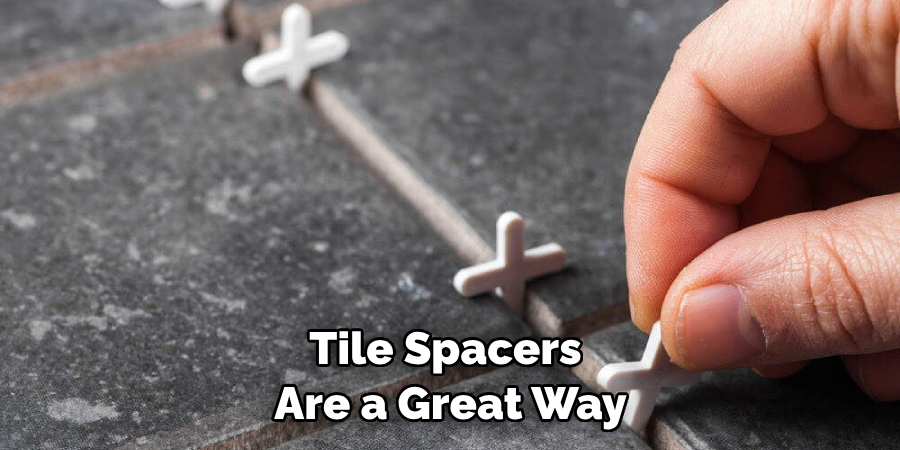
Q. How Long Does It Take For the Tiles to Cure?
A. The amount of time it takes for the tiles to cure will depend on the type of tile you are using and should be specified in the manufacturer’s instructions. Generally speaking, ceramic or porcelain tiles may take up to 24-48 hours before they are ready to use. If you are using natural stones, it may take up to 72 hours or more for them to be fully cured.
Q. How Often Should I Seal the Grout?
A. The frequency of sealing your grout will depend on the type of sealant and usage of the shower – generally speaking, every 6-12 months is recommended. It’s a good idea to do a quick check every few months to make sure that the sealant is still intact and that your shower looks great!
Conclusion
Over and above, building a curbless shower on a wood floor requires careful planning as there are many technical considerations that must be factored in for success. It is critical to ensure the structure of the floor can support the extra weight compared to a typical shower bath, trim, and tile application.
Furthermore on how to build a curbless shower on wood floor, waterproofing is required in order to prevent excessive damage from water penetration at any weak points within the construction. Despite the work involved, this project can be quite enjoyable as it opens up great design possibilities.
Whether you plan to do it yourself or hire a contractor, be sure to research your options with your local municipality beforehand. Although there are challenges and unknowns that could arise during any remodeling process, you can rest assured knowing that taking your time results in a beautiful finished product that will reap rewards for years to come.

